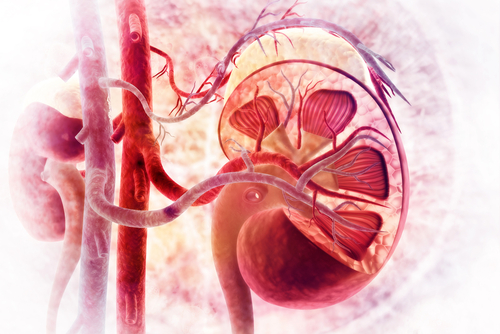EBA Can Lead to Acute Renal Failure, Case Report Contends
Written by |

Patients with epidermolysis bullosa acquisita sometimes can develop acute renal failure, according to a case report.
The report, “Acute renal failure in a patient with epidermolysis bullosa acquisita,” was published in the journal Anais Brasileiros de Dermatologia.
Epidermolysis bullosa acquisita (EBA) is a severe autoimmune skin disease that develops when antibodies attack the cutaneous basement membrane zone of the skin.
EBA can develop alongside other autoimmune diseases, such as systemic lupus erythematosus, Graves’ disease, Crohn’s disease, and viral infection. However, it has not been described previously as occurring concurrently with acute renal failure.
In this report, Chinese researchers describe, for the first time, the case of a patient with EBA who developed acute renal failure.
The 74-year-old man reported to the hospital with a history of pruritus universalis — severe itching — for six months, and bullous eruption — fluid-filled blisters — on his back for one month.
In order to diagnose the patient, physicians conducted a skin biopsy, results of which showed immune cell invasion into the subepidermal skin layer and indicative of autoimmune disease. Researchers then used a method called immunofluorescence, which allowed them to detect the presence of antibodies, and diagnosed the patient with EBA.
The patient was given 80 mg of methylprednisolone, an anti-inflammatory, per day and treated with ethacridine lactate, an anti-septic. The treatment was effective and after three days the patient’s condition significantly improved as all lesions began to heal.
Unfortunately, at that time, the patient developed acute renal (kidney) failure. This led physicians to conduct liver and renal function tests, results of which indicated severe renal dysfunction. The patient was then transferred to the nephrology department for subsequent treatment with saline solution (0.9% NaCl), hydroxyethyl starch (HES) to expand his blood volume, specific vitamins, magnesium, and other compounds. Methylprednisolone treatment was continued.
After eight weeks of treatment, the patient’s condition improved regarding both acute renal failure and EBA. The patient’s methylprednisolone dose was then reduced from 80 mg per day to 50 mg per day.
According to the case report, acute renal failure can occur quickly after the development of EBA. Interestingly, while it is known that several autoimmune diseases can simultaneously develop in the same patient, it is unclear why both acute renal failure and EBA would occur together and whether they are related.
“It is important to investigate these relationships and provide more effective treatment for EBA in order to better prevent the occurrence of ARF [acute renal failure],” the researchers wrote.
“There is a possibility that epidermolysis bullosa acquisita and acute renal failure’s pathogenesis shared some common autoimmune pathways,” the researchers suggested.
Furthermore, the team noted, there was a large amount of fluid on the EBA-related skin lesions, suggesting the patient likely suffered from a blood volume reduction, which can on its own lead to pre-renal failure. However, a renal biopsy would have to be conducted to verify that hypothesis.





